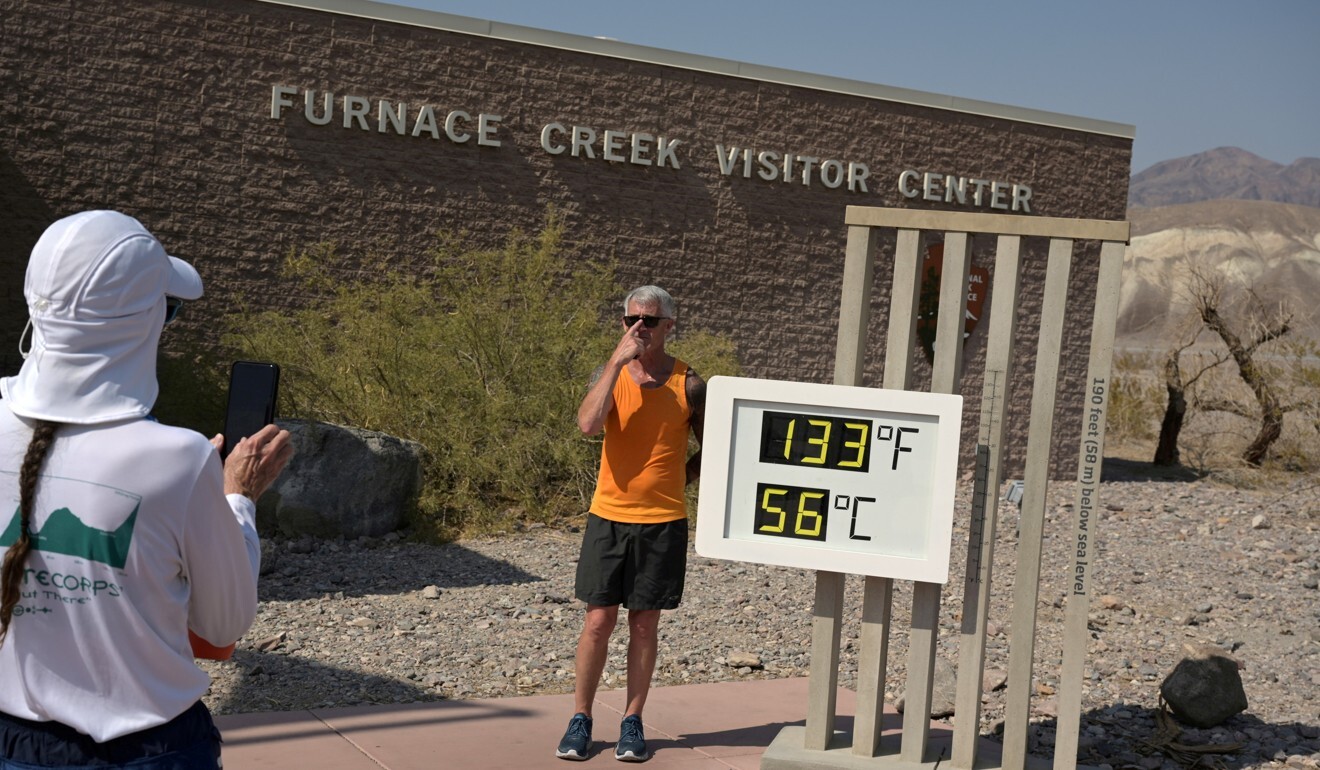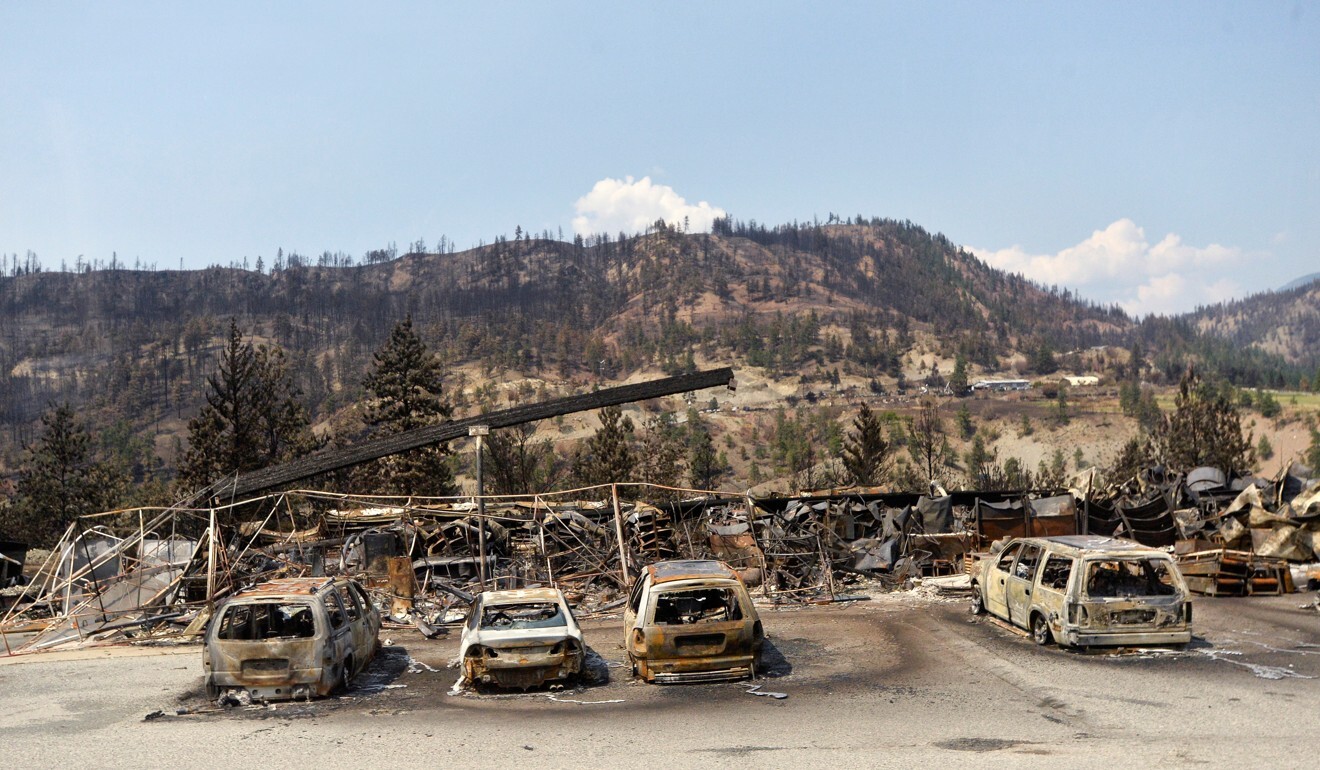
Death Valley tops 54 degrees Celsius as brutal heat bakes US west
- Millions swelter in US west as Canada takes emergency steps
- Death Valley in California is often America’s hottest spot
A brutal heatwave punishing the US west pushed temperatures toward all-time records for a third day on Sunday, as Death Valley in California, scorched at 56 degrees Celsius (133 Fahrenheit) was again one of the hottest spots on the planet.
Sweltering conditions hit much of the Pacific seaboard and as far inland as the western edge of the Rocky Mountains over the weekend.
The National Weather Service issued excessive heat warnings across much of the region and cautioned residents that the high temperatures could be hazardous to the their health and that of loved ones, especially small children and the elderly.
“I just came up here to see how hot it gets,” said Richard Rader of Scottsdale, Arizona, who said he had ridden his bike 16km across Death Valley on Sunday.

Other tourists got out of their air-conditioned cars only long enough to pose for pictures with the thermometer.
The sweltering heat, which extended across much of the Pacific northwest, pressured power grids and fuelled major wildfires, including a blaze burning in Southern Oregon that threatened homes and knocked out electricity.
In Oregon, the Bootleg Fire more than tripled in size between Friday and Sunday, gaining more than 100,000 acres, according to the US Forest Service.
After Covid-19, could next big killer be heatwaves?
In Canada, with wildfires continuing to spread – including 50 more blazes erupting in the past two days – the government announced new emergency measures aimed at preventing further fires.
Canadian transport minister Omar Alghabra on Sunday announced new emergency measures, including steps to slow or limit train traffic.
Trains are a common cause of wildfires, often when their spark-arresting devices are poorly maintained.

Several roads and highways in the area have been closed as the government rated the wildfire risk in much of the province as “extreme”. A dozen towns or locales remained under evacuation orders.
‘Heartbreaking’ destruction of Chinese-Canadian heritage
The overall death toll in British Columbia was not yet known but is thought to run into the hundreds.
As of Sunday morning, the number of wildfires across British Columbia was continuing to rise, hitting 298, authorities said.
Last month was the hottest June on record in North America, according to data released by the European Union’s climate monitoring service.
Human activity has driven global temperatures up, stoking increasingly fierce storms, extreme heatwaves, droughts and wildfires.
The World Meteorological Organization and Britain’s Met Office said in May there was a 40 per cent chance of the annual average global temperature temporarily surpassing 1.5 degrees above pre-industrial temperatures within the next five years.
The past six years, including 2020, have been the six warmest on record.
Reuters and Agence France-Presse
